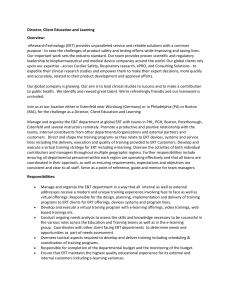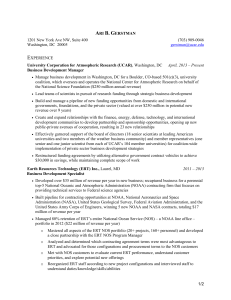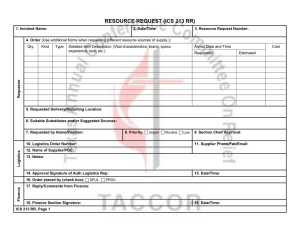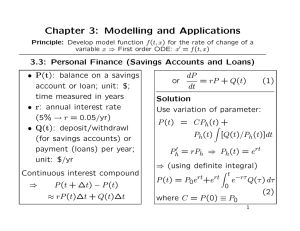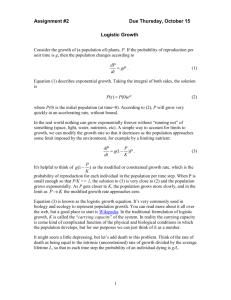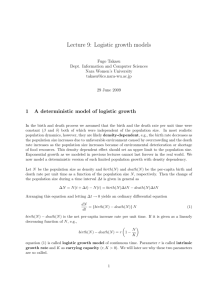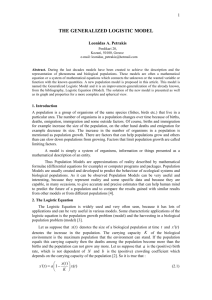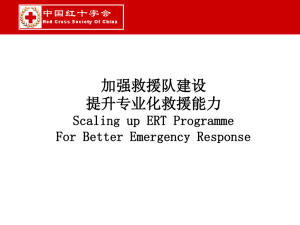Population Growth Questions Answer Key
advertisement
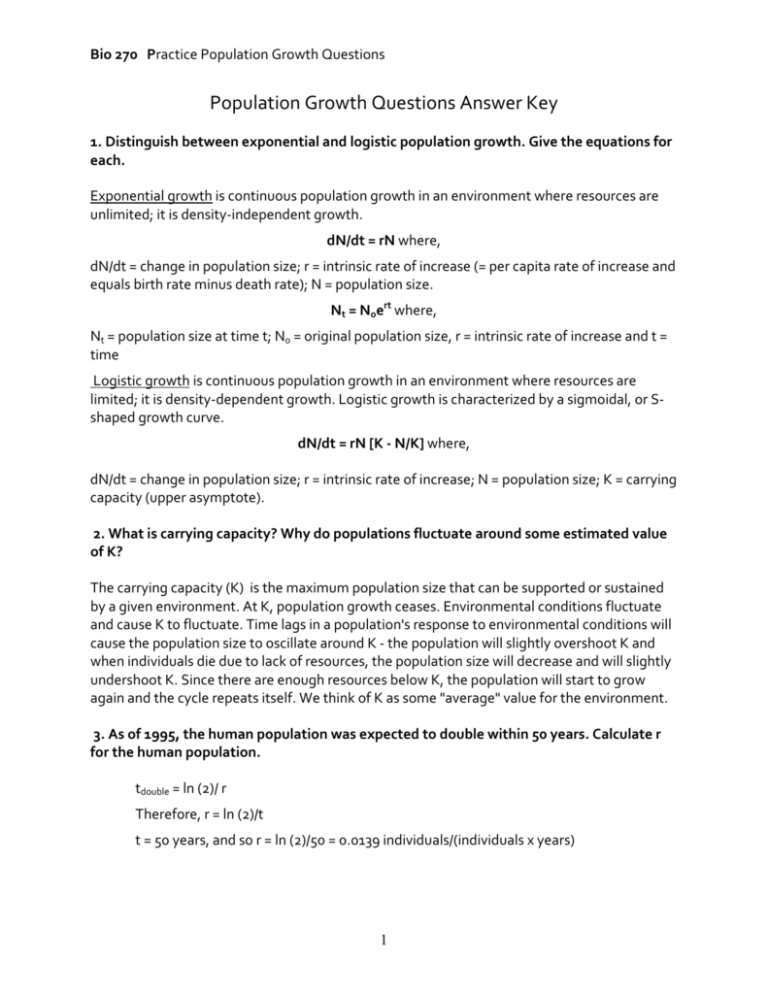
Bio 270 Practice Population Growth Questions Population Growth Questions Answer Key 1. Distinguish between exponential and logistic population growth. Give the equations for each. Exponential growth is continuous population growth in an environment where resources are unlimited; it is density-independent growth. dN/dt = rN where, dN/dt = change in population size; r = intrinsic rate of increase (= per capita rate of increase and equals birth rate minus death rate); N = population size. Nt = Noert where, Nt = population size at time t; No = original population size, r = intrinsic rate of increase and t = time Logistic growth is continuous population growth in an environment where resources are limited; it is density-dependent growth. Logistic growth is characterized by a sigmoidal, or Sshaped growth curve. dN/dt = rN [K - N/K] where, dN/dt = change in population size; r = intrinsic rate of increase; N = population size; K = carrying capacity (upper asymptote). 2. What is carrying capacity? Why do populations fluctuate around some estimated value of K? The carrying capacity (K) is the maximum population size that can be supported or sustained by a given environment. At K, population growth ceases. Environmental conditions fluctuate and cause K to fluctuate. Time lags in a population's response to environmental conditions will cause the population size to oscillate around K - the population will slightly overshoot K and when individuals die due to lack of resources, the population size will decrease and will slightly undershoot K. Since there are enough resources below K, the population will start to grow again and the cycle repeats itself. We think of K as some "average" value for the environment. 3. As of 1995, the human population was expected to double within 50 years. Calculate r for the human population. tdouble = ln (2)/ r Therefore, r = ln (2)/t t = 50 years, and so r = ln (2)/50 = 0.0139 individuals/(individuals x years) 1 Bio 270 Practice Population Growth Questions 4. If the human population size in 1993 was 5.4 billion, what was the projected population size in the year 2000 (use info from previous question)? No = population size in 1993 = 5.4 billion t = 7 years (year 2000 - 1993) r = 0.0139 (from question above) Nt = No ert Nt = (540,000,000) e(0.0139)(7) Nt /540,000,000 = e 0.0973 Dust off your high school math skills. To get rid of the exponent, simply take the natural log (ln) of both sides of the equation. Remember, when we take the natural log of a quotient we end up taking the ln of one value and subtracting it from the ln of the other value (see below). ln (Nt /540,000,000) = ln (e 0.0973) [here we're taking the natural log of the quotient] = ln(Nt) - ln(540,000,000) = 0.0973 [rewrite it as natural log of one value minus natural log of the other value] Nt = 595,000,000 or 5.95 billion 5. A population of Nicotiana, an annual plant, increases by 12% every year. Calculate the doubling time for this population. If the population increases by 12% per year, then l = 1.12 r = ln l = ln(1.12) = 0.113 individuals/(individuals x year) tdouble = ln(2)/r Therefore, t = ln(2)/0.113 = 6.1 years 2 Bio 270 Practice Population Growth Questions 6. In your research on population dynamics of June beetles, you estimate that the population size is 3,000. Over the course of a month, you record 400 births and 150 deaths in the population. Estimate r and calculate what the population size is predicted to be in 6 months. We know that there are 400 births in the population over the month, in our population of 3,000 individuals; we can express this as a rate by doing the following: Birth rate = 400/3000 = 0.1333 births/(indiv. x month) Using the same logic… Death rate = 150/3000 = 0.0500 deaths/(indiv. x month) r = birth rate - death rate = 0.1333 - 0.0500 = 0.0833 Nt = No ert We know that t = 6 months (given in the question) Therefore, Nt = 3000 e (0,0833)(6) ln Nt - ln 3000 = 0.4998 Nt = 4945 beetles 7. A population of Spotted Fritillary butterflies exhibits logistic growth. If the carrying capacity is 500 butterflies and r = 0.1 individuals/(individuals x month), what is the maximum population growth rate for the population? (Hint: maximum population growth rate occurs when N = K/2). In the question you're given the following information: K = 500 r = 0.1 maximum population growth at K/2 Therefore, the maximum population size = K/2 = 500/2 = 250 dN/dt = rN[1-N/K] - this is the logistic growth equation dN/dt = (0.1)(250) [1 - (250)/500)] dN/dt = 12.5 individuals/month 3 Bio 270 Practice Population Growth Questions 8. What are the effects of environmental and demographic stochasticity on population growth? Environmental and demographic stochasticity will result in variation in the population growth rate. Under these influences population size will fluctuate significantly over time. 9. A sample of single celled marine algae from the Giant Stairs site provided an estimate of 100,000 cells on the initial sampling date. Ten days later, the population size was estimated to be 500,000 cells. Calculate the intrinsic rate of increase (r) for the population. Nt = No ert Nt / No = ert Take the natural log of both sides to get rid of eln Nt - ln No = rt ln Nt - ln No/t = r Plug in the numbers…. r = ln(500,000) - ln(100,000)/10 = 13.12 - 11.51/10 = 0.16 indiv./(indiv. x day) 10. For the algal population described in question 9 above, use the exponential model of population growth to predict the size of the population after another 10 days. Nt = No ert We're given this info: No = 500,000 t = 10 days r = 0.16 Nt / No = ert Nt /500,000 = e (.16)(10) ln Nt - ln (500,000) = 1.6 ln Nt = 13.12 + 1.6 ln Nt = 14.72 Nt = 2.47 million cells 4
